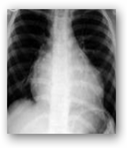This is still work in progress but it can take the diagnosis time  down to a few minutes from taking a few days. So far this has only been done with mice and the next move is to bring this testing to humans. The great news is that scientists have been able to identify the footprints. Other scientists have work going in this direction too with cancer and diabetes with a breath test. This would beat having dogs diagnose, which is as close as we have come so far:) Volatile organic compounds is what is analyzed in exhaled breath. BD
down to a few minutes from taking a few days. So far this has only been done with mice and the next move is to bring this testing to humans. The great news is that scientists have been able to identify the footprints. Other scientists have work going in this direction too with cancer and diabetes with a breath test. This would beat having dogs diagnose, which is as close as we have come so far:) Volatile organic compounds is what is analyzed in exhaled breath. BD
Successfully identifying the chemical fingerprints of specific bacteria in the breath could lead to a breathalyser capable of detecting lung diseases such as tuberculosis.
A team from the University of Vermont was able to successfully identify strains of bacteria in the lungs of mice by analysing volatile organic compounds in exhaled breath.
"Traditional methods employed to diagnose bacterial infections of the lung require the collection of a sample that is then used to grow bacteria. The isolated colony of bacteria is then biochemically tested to classify it and to see how resistant it is to antibiotics," said co-author on the study Jane Hill, a microbiologist at the University of Vermont. "This whole process can take days for some of the common bacteria and even weeks for the causative agent for tuberculosis. Breath analysis would reduce the time-to-diagnosis to just minutes."
http://www.wired.co.uk/news/archive/2013-01/11/tuberculosis-breath-test
No comments:
Post a Comment